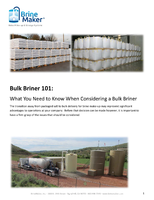ANSI highlights standards for National Blood Donor Month.
Press Release Summary:
ANSI is highlighting standards that help to assure blood is collected, stored, and transfused safely/efficiently. Adopted by AAMI as ANS, ANSI/AAMI/ISO 81060-1:2007, Non-invasive sphygmomanometers - Part 1, specifies use of inflatable cuffs that measure blood pressure. ANSI/AAMI BF64-2002, Leukocyte Reduction Filters offers guidelines to treat blood during transfusion, while ISO 1135-4:2004, Transfusion equipment for medical use, specifies requirements for single-use transfusion sets.
Original Press Release:
Standards Promote Safety and Good Health During National Blood Donor Month
January is National Blood Donor Month, encouraging eligible Americans to roll up their sleeves for the four million accident victims, surgery patients, hemophiliacs, and others that benefit from blood donations each year. As campaigns for blood donations spread across the country, standards help to assure that blood is collected, stored, and transfused safely and efficiently.
Before the process of giving blood begins, potential donors are given a blood pressure screening, among other brief tests, to check eligibility. Those whose blood pressure is too low or high may be asked to defer donation. To assure a safe and accurate reading, ANSI/AAMI/ISO 81060-1:2007, Non-invasive sphygmomanometers - Part 1: Requirements and test methods for non-automated measurement type, specifies the use of inflatable cuffs that measure blood pressure, like those used by care providers in blood donation centers.
This standard was developed by the International Organization for Standardization (ISO) Technical Committee 121, Anaesthetic and respiratory equipment, subcommittee (SC) 3, Lung ventilators and related equipment. The U.S. holds the secretariat to ISO TC 121, SC 3, which the American National Standards Institute (ANSI) has delegated to Dave Osborn of Philips Medical Systems. The U.S. also holds the chairmanship of SC 3, with Professor J. Hedley-Whyte of Harvard University leading the subcommittee. Finally, U.S. positions are carried forward to SC 3 by ASTM International, an ANSI member and audited designator, in their role as ANSI-accredited U.S. Technical Advisory Group (TAG) Administrator.
The Association for the Advancement of Medical Instrumentation (AAMI) - an ANSI member and accredited standards developer - has adopted ISO 81060-1:2007 as an American National Standard (ANS).
Once a blood transfusion begins, a number of standards are in place so that the procedure runs smoothly and safely. An ANS developed by AAMI provides guidelines for a process to treat blood during a transfusion. ANSI/AAMI BF64-2002, Leukocyte Reduction Filters, contains labeling requirements, performance requirements, test methods, and terminology for disposable filters used for the reduction of leukocytes from blood or blood components during transfusion. Leukocytes, or white blood cells, can cause serious adverse reactions during transfusions, particularly for cardiovascular surgery patients, newborns, pregnant patients, and others.
International Standards are also in place to facilitate successful blood transfusions. ISO 1135-4:2004, Transfusion equipment for medical use, specifies requirements for single-use transfusion sets in order to ensure their compatibility with containers for blood and blood components, as well as with intravenous equipment.
Published by ISO, this standard was developed by ISO TC 76, Transfusion, infusion and injection equipment for medical and pharmaceutical use, Working Group 5, Blood collection systems. AABB, an ANSI member, is the ANSI-accredited U.S. Technical Advisory Group (TAG) administrator to this TC, carrying U.S. positions forward to the committee.
Those interested in becoming a donor can contact the American Red Cross, AABB, or America's Blood Centers to find out if they are eligible and where to donate. First time donors can visit this Red Cross information page that details the process, tips for a successful donation, and the benefits of being a donor.




